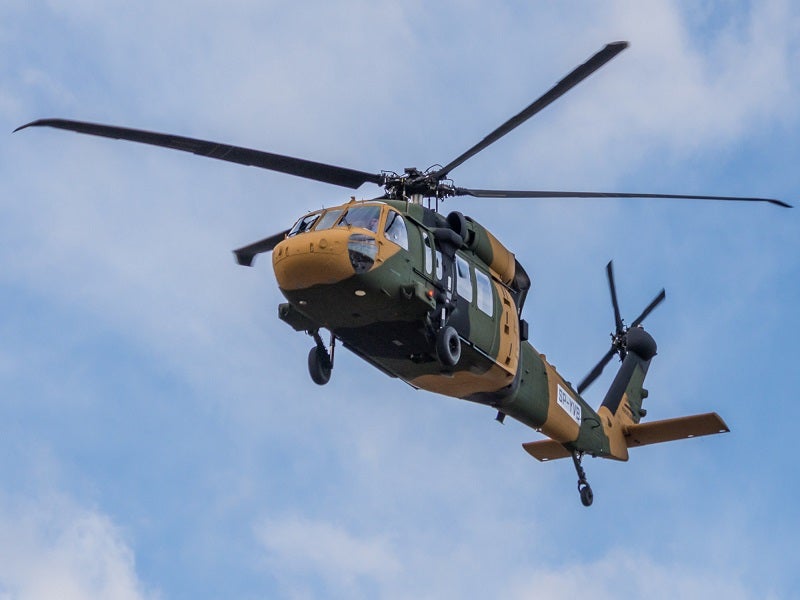Modernized Vertical Lift Platform With Advanced Composite Frameworks and Boosted Security Measures
In the world of upright lift platforms, a significant shift towards modernization has been observed, driven by the combination of innovative composite frameworks and enhanced safety steps. These enhancements represent an essential advancement in the layout and capability of lift platforms, promising increased effectiveness and integrity throughout various markets (sikorsky s 70). As markets pursue better operational precision and safety standards, the usage of composite products and progressed safety features has become vital. In discovering the convergence of innovation and security in modern lift platforms, an engaging narrative arises, showcasing the capacity for transformative improvements that deal with the ever-evolving needs of industrial sectors.
Development of Vertical Lift Systems

The development of upright lift systems can be mapped back to fundamental pulley-block systems and very early elevator styles. Over time, advancements such as hydraulic systems, electric motors, and advanced control mechanisms have actually vastly enhanced the performance and security of these systems. Manufacturers have also focused on improving the stability, reach, and load-bearing capabilities of vertical lift systems to fulfill the varied demands of various sectors.
In addition, the integration of smart technologies like sensors, IoT connectivity, and automation features has even more transformed the capabilities of modern vertical lift platforms. These technological enhancements not only enhance functional productivity however also guarantee increased security requirements for workers utilizing these platforms at numerous elevations. The constant development of vertical lift systems emphasizes their crucial duty in boosting vertical movement across sectors.
Assimilation of Advanced Compound Structures

Furthermore, the usage of innovative composite materials allows for even more complicated and enhanced structural layouts, allowing engineers to tailor the system's properties to fulfill certain performance requirements. Generally, the consolidation of sophisticated description composite structures in modern-day upright lift platforms represents a substantial improvement in aerospace innovation, leading to much more efficient, reliable, and much safer airborne transport systems.
Improved Security Steps Implementation
Implementing enhanced security steps is important in making sure the optimum efficiency and integrity of modern-day upright lift platforms. One essential element of boosted safety and security steps is the combination of sophisticated sensing unit modern technologies to keep track of different specifications in real-time.

Sector Applications and Benefits
With advancements in innovation and design, improved vertical lift systems have actually found diverse applications across numerous sectors, providing considerable advantages in performance and productivity. The construction market advantages from upright lift platforms by enabling employees to accessibility raised locations safely and effectively, boosting general job timelines.
Furthermore, upright lift platforms play a critical role in the maintenance and repair service of framework such as bridges, high-voltage line, and structures, permitting professionals to get to hard to reach locations with convenience (sikorsky s 70). The aeronautics sector additionally leverages these systems for airplane upkeep and setting up tasks, improving workflow efficiency and guaranteeing worker safety at elevations. On the whole, the prevalent fostering of modernized vertical lift systems throughout markets highlights their flexibility and the significant renovations they offer numerous operations
Future Trends in Lift Platform Technology
Including innovative automation and smart features, lift system modern technology is positioned to reinvent vertical transportation systems in the future. One crucial pattern is the integration of Net of Things (IoT) technology, making it possible for lift systems to communicate real-time information for view predictive maintenance, maximizing performance, and boosting security. Expert system and maker knowing formulas are likewise being included to examine patterns, predict possible issues, and boost efficiency. In addition, using innovative materials such as carbon fiber compounds gets on the surge, using increased durability and stamina while reducing general weight. Enhanced security steps, including biometric verification and emergency situation feedback systems, are coming to be common attributes to make certain traveler security. Furthermore, modular layouts and adjustable setups are obtaining popularity, permitting higher flexibility to different atmospheres and requirements. As lift platform modern technology remains to evolve, these patterns are set to form the future of upright transportation, making it extra reliable, secure, and easy to use.
Final Thought
In final thought, the up-to-date upright lift system showcases the development of modern technology in the industry. By integrating sophisticated composite frameworks and boosted safety and security actions, this system provides boosted performance and security for numerous applications. The industry can profit considerably from these advancements, and future patterns in lift system technology are most likely to proceed surpassing these innovations for also better success and efficiency.
In the world of upright lift platforms, a substantial shift in the direction of modernization has been observed, driven by the assimilation of sophisticated composite structures and increased safety measures. The continual advancement of vertical lift systems highlights their important role in boosting vertical wheelchair across sectors.

The incorporation of advanced composite frameworks in modern-day upright lift platforms has actually considerably improved their structural stability and performance capacities. By integrating these sophisticated composites right into the style and construction of vertical lift platforms, suppliers can reduce general weight, boost load-carrying ability, and boost the platform's toughness and long life.
Executing improved safety and security actions is vital read in making certain the optimum efficiency and reliability of modern vertical lift platforms.